Medical Disclaimer: This article is for informational purposes only and does not constitute medical advice. The content is not a substitute for professional veterinary care. Always consult with a qualified veterinarian for any health concerns or before starting a new treatment plan for your pet.
Table of Contents
That extra bit of pudge on your dog can feel more like something to cuddle than a cause for concern. As a vet, I hear it all the time in my Ottawa clinic: “He’s just big-boned!” But the quiet truth is that canine obesity is one of the most significant health threats our dogs face today.
Key Takeaways
Canine obesity is a serious medical condition, defined as a dog being 15-20% or more over their ideal body weight. This excess weight isn’t just stored fat; it’s a biologically active tissue that releases inflammatory hormones, increasing the risk for arthritis, diabetes, heart disease, and even some cancers.
The first step in addressing potential canine obesity is a thorough veterinary check-up to rule out underlying medical issues and create a safe, tailored weight loss plan. A successful plan always combines a precisely calibrated diet, often a veterinary prescription food designed to preserve muscle while burning fat, with a consistent, low-impact exercise routine. With patience and veterinary guidance, helping your dog reach a healthy weight is one of the most powerful things you can do for their long-term health and happiness.
Understanding Canine Obesity: More Than Just a Number on the Scale
Also see: https://doglifeexpert.com/probiotics-for-dogs-7-powerful-strains/
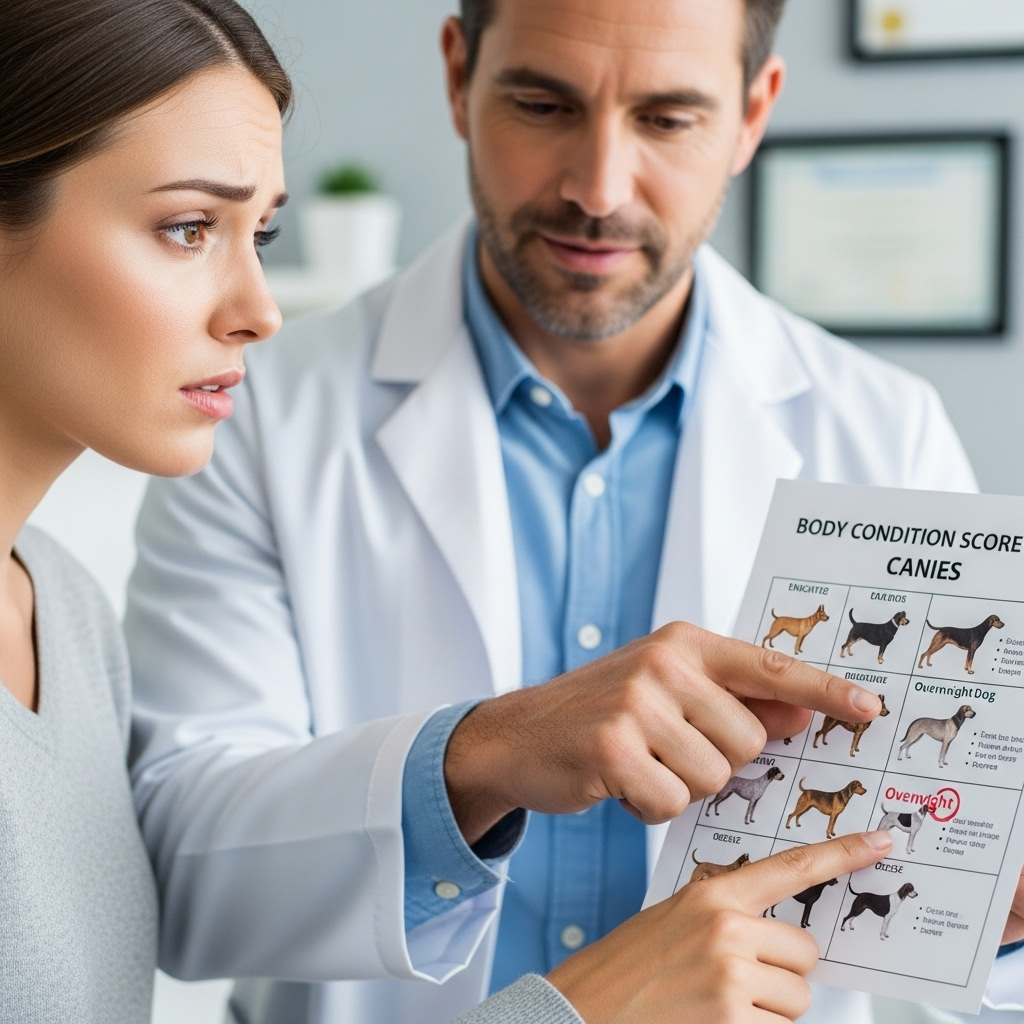
It’s easy to let our love for our dogs translate into extra treats and generous meal portions. Over time, this “cupboard love” can lead to a serious health issue: canine obesity.
What is Canine Obesity? A Clinical Definition
In veterinary medicine, we don’t just guess. Canine obesity is clinically defined as a pet being 15% to 20% or more above its ideal body weight. According to the comprehensive guidance in the Merck Veterinary Manual on obesity in small animals, this condition is the most common nutritional disorder seen in our companion animals. It’s not about your dog being “chubby”; it’s a genuine medical condition with far-reaching consequences.
The Startling Statistics: A Growing Epidemic
The statistics are truly eye-opening. Reputable sources like VCA Animal Hospitals confirm that obesity in dogs is a widespread issue, with studies consistently showing that well over half the dogs in North America are overweight. In my own practice here in Ottawa, I see firsthand how this national trend affects our local community of pets; at least six out of every ten dogs I examine for an annual check-up could benefit from losing some weight. This isn’t a judgment; it’s a call to action for protecting our beloved companions from the silent risks of canine obesity.
The Hidden Dangers: Metabolic Impact of Canine Obesity

For many years, we thought of fat as just a passive substance, a storage unit for excess energy. We now know this is dangerously incorrect. The reality is that excess fat is a metabolically active organ, and its presence has a profound impact on your dog’s health.
The Myth of “Inactive” Fat: A Biologically Active Threat
One of the most critical concepts we discuss in veterinary internal medicine, as detailed in texts like the Saunders Manual of Small Animal Practice, is that fat tissue functions as an endocrine organ. This means it actively secretes hormones and proteins, many of which are pro-inflammatory. This chronic, low-grade inflammation puts constant stress on your dog’s body, contributing to cell damage and paving the way for disease. Addressing canine obesity is about more than shedding pounds; it’s about reducing this invisible, internal inflammation.
Common Health Risks Associated with Canine Obesity
This state of chronic inflammation directly contributes to a host of health problems. When I’m working through a diagnosis for a dog with excess weight, I’m often consulting resources like Blackwell’s Five-Minute Veterinary Consult to ensure I’m considering all the potential co-existing conditions. These commonly include:
- Osteoarthritis: Extra weight puts immense strain on joints, accelerating cartilage breakdown and causing significant pain.
- Diabetes Mellitus: Obesity is a major risk factor for insulin resistance, which can lead to type 2 diabetes.
- Heart and Respiratory Disease: The heart has to work harder to pump blood, and excess fat around the chest can restrict lung expansion, making breathing difficult.
- Kidney Disease: The inflammatory state can damage the delicate filtering structures in the kidneys.
- Certain Types of Cancer: There is a known link between canine obesity and a higher risk of developing some cancers, such as transitional cell carcinoma of the bladder.
- Decreased Lifespan: Perhaps most powerfully, multiple studies have shown that lean dogs live, on average, up to two years longer than their overweight counterparts.
Is My Dog Overweight? A 5-Minute At-Home Checklist
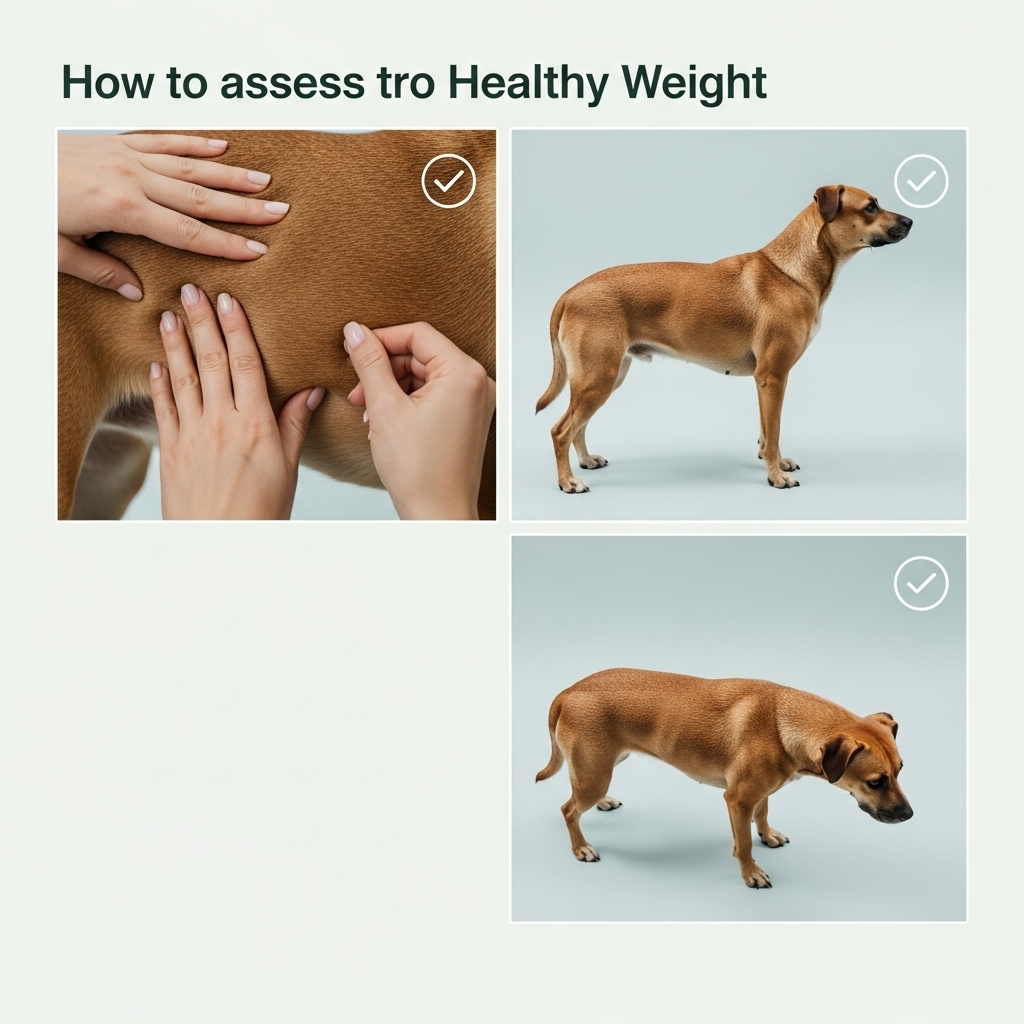
While a scale and your vet’s assessment are the gold standard, you can perform a quick “Body Condition Score” (BCS) check at home. This hands-on assessment helps you look past the fluff and evaluate your dog’s true body shape.
The Rib Check: A Hands-On Assessment
Gently run your palms over the side of your dog’s chest. In a dog at an ideal weight, you should be able to easily feel their ribs with a slight fat covering, similar to how the back of your hand feels. If you have to press firmly to find the ribs, or can’t feel them at all, your dog is likely carrying too much weight.
The Profile View: Spotting the Signs
Have your dog stand up and look at them from the side. You should see a clear “abdominal tuck,” where their belly slopes up from the chest to the hind legs. If their belly line is straight or hangs down, it’s a strong indicator of excess abdominal fat, a key component of canine obesity.
The Overhead View: Looking for a Waistline
Stand over your dog and look down. You should see a visible, hourglass-like waistline between their ribs and hips. If their shape is more oval or rectangular, without a clear indentation, they are overweight.
Crafting an Evidence-Based Weight Loss Plan for Your Dog
Seeing the signs of canine obesity can be discouraging, but the journey to a healthy weight is entirely achievable with the right plan. It’s a partnership between you and your veterinary team.
The First Step: A Veterinary Consultation
Before changing a single thing, book an appointment with your vet. This is crucial for two reasons. First, we need to rule out any medical conditions that can cause weight gain, such as hypothyroidism or Cushing’s disease. Second, we will establish your dog’s ideal weight and calculate the precise daily calorie intake needed for safe, effective weight loss. This foundational step is non-negotiable for tackling canine obesity safely.
The Role of a Prescription Diet in Managing Canine Obesity
While it’s tempting to just reduce the amount of their current food, this can lead to nutritional deficiencies. This is where veterinary therapeutic diets shine. As supported by extensive research, including a 2024 meta-analysis on the success of hypocaloric diets, these foods are specially formulated. They are lower in calories but high in protein to help your dog feel full and maintain lean muscle mass while burning fat. They also have an optimal balance of fibre, vitamins, and minerals to ensure complete nutrition during the weight loss period.
Exercise: More Than Just a Walk in the Park
Exercise is vital, but it must be appropriate for your dog’s current condition. For a dog struggling with canine obesity, high-impact activities like jumping for a frisbee can be hard on the joints. We focus on consistent, low-impact exercise:
- Leash Walks: Start with short, 15-20 minute walks twice daily and gradually increase the duration as their stamina improves.
- Swimming: An excellent, non-weight-bearing exercise that works the whole body.
- Mental Stimulation: Use puzzle feeders and “find the treat” games to make them work for a small portion of their daily kibble. This burns mental energy and combats boredom, which can sometimes lead to begging.
The Cost of Canine Obesity: A Look at Veterinary Expenses in Canada
Managing canine obesity involves an initial investment, but it pales in comparison to the long-term costs of treating the diseases it causes. Below are some typical Canadian cost estimates.
| Service/Product | Estimated Cost (CAD) | Notes |
| Initial Weight Loss Consultation & Exam | $80 – $150 | Includes physical exam, body condition scoring, and plan creation. |
| Diagnostic Bloodwork (e.g., Thyroid Panel) | $200 – $400 | To rule out underlying medical causes of weight gain. |
| Monthly Cost of Prescription Diet | $100 – $200+ | Varies significantly based on dog size and specific diet brand. |
| Arthritis Pain Medication (Monthly) | $60 – $150+ | A common long-term cost for dogs whose obesity has damaged their joints. |
| Diabetes Management (Insulin, Supplies) | $150 – $250+ | A significant ongoing monthly expense if the condition develops. |
Note: These are estimates and can vary based on your location and the individual veterinary clinic’s pricing.
7 Essential Tips for Preventing Canine Obesity
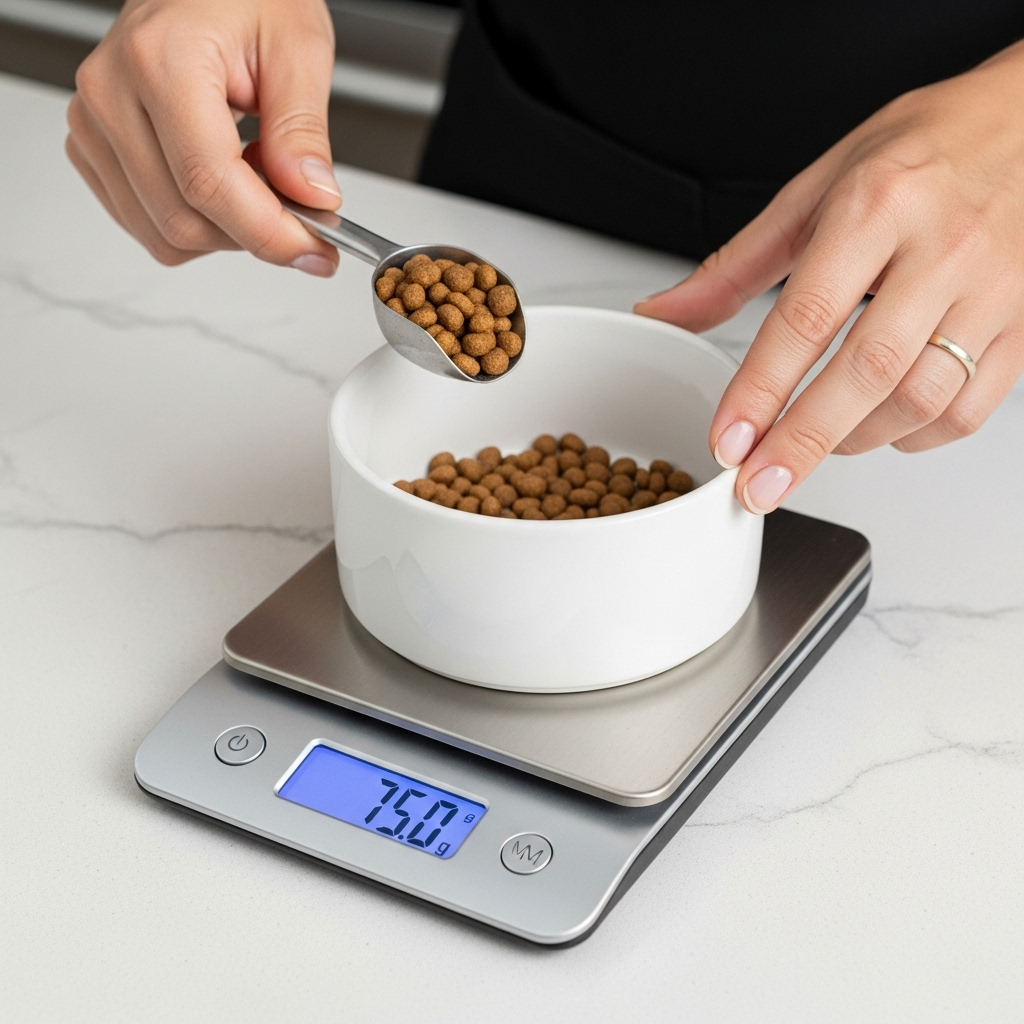
Prevention is always the best medicine. Here are my top tips for keeping your dog at a healthy weight from the start.
- Measure Every Meal: Use a proper measuring cup or a kitchen scale. Never “eyeball” it!
- Account for All Treats: Treats have calories. The “10% Rule” is a great guideline: treats should make up no more than 10% of your dog’s total daily caloric intake.
- Choose Healthy Treats: Swap high-fat commercial treats for options like baby carrots, green beans, or small pieces of apple (no seeds!).
- Stay Active Daily: Consistent, daily exercise is more effective than being a “weekend warrior.”
- Regular Weigh-Ins: Pop into your vet clinic for a quick weight check on their scale every month or two. It’s often free and helps you stay on track.
- Spay/Neuter Awareness: The metabolism of dogs can slow down after being spayed or neutered. Be prepared to adjust their food intake accordingly post-surgery to prevent weight gain.
- Engage the Whole Family: Make sure everyone in the house, including kids and visitors, is on the same page about not giving extra, unmeasured food.
FAQs About Canine Obesity
How quickly should my dog lose weight?
A safe rate of weight loss for a dog is about 1-2% of their starting body weight per week. Faster weight loss can lead to muscle loss and is not sustainable. Your veterinarian will help you set a realistic timeline.
Are grain-free diets better for weight loss?
Not necessarily. The most important factors for a weight-loss diet are the total calorie count and the protein-to-fat ratio, not the absence of grains. Many grain-free foods are very high in calories. Stick to the diet recommended by your vet.
What if my dog is constantly hungry on their new diet?
This is a common concern. Prescription weight-loss diets are high in fibre to help dogs feel full. You can also try using a slow-feeder bowl or puzzle toy to make mealtime last longer. Breaking their daily food allowance into three or four smaller meals instead of two big ones can also help.
Can I just use a “light” or “lite” food from the pet store?
While better than regular food, over-the-counter “lite” foods have less stringent regulations regarding their calorie and nutrient content compared to veterinary prescription diets. For a dog with a significant canine obesity problem, a prescription diet is almost always more effective and safer.
A Final Word: Your Partner in Your Dog’s Health
Facing the reality of canine obesity can feel overwhelming, but please know you are not alone. This journey is a testament to the love you have for your dog. Every measured meal, every extra walk, and every healthy treat you choose is a powerful step towards giving them a longer, happier, and more comfortable life. Think of it not as deprivation, but as an investment in future years of play, companionship, and joy. Your veterinarian is your greatest ally in this process, so lean on their expertise and celebrate every small victory along the way. You can do this, and your best friend is worth it.



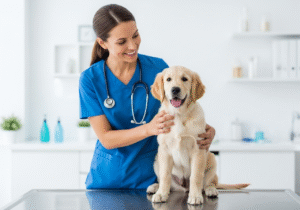
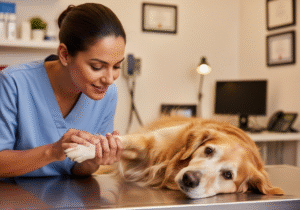
Pingback: Periodontal Disease In Dogs: 3 Shocking Dangers for 2025